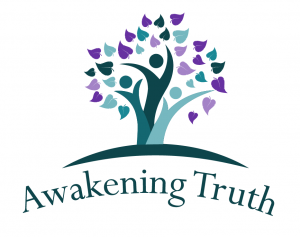Building Connection, Resilience, and Grounding

Photo: Brandon Green on Unsplash
I feel passionate about the Integrated Meditation Program (IMP) because its tools and practices bring a sense of aliveness, joy, and connection to me, my colleagues, and students. I see the impact in all parts of my life.
If, like me, you’ve felt a persistence of lack of safety and confidence, subtle or not, and are ready to practice in a way that supports every aspect of your life, I invite you to learn more about this process and my journey to get here.
For 26 years, I lived as a Buddhist nun, immersing myself in classical meditation practices and community life. Meditation and the community in which we practiced, were my life—it’s where I sought refuge, healing, and meaning. Meditation has been invaluable, offering strength, clarity, and insights, guiding me to qualities of the heart and quieting the agitated mind. But even with decades of practice and deep insights, I was left with pervasive experiences of lack of safety and low self-worth. My observations included seeing how senior monastics who had signs of deep states of realization yet were blind to the impact of their personal bias’, attitudes, words and actions.
It would be hard to list all the tools, supports and insights meditation has offered me. Yet as invaluable as it’s been, by itself it didn’t help me learn to notice when my overwhelm was taking me out of my window of tolerance, shift my focus then to notice pleasant experiences to stay present with what was happening and not disassociate. Meditating didn’t help me understand why my tendency is to freeze. Nor did it help me identify and defend against micro and macro aggressions living in this world as a woman. Meditation didn’t help me see the pattern of trauma passed on by my ancestors. Meditation didn’t help me differentiate between the dark night of the soul, the natural fear before opening to liberating insights and the terror of a trauma activation. It didn’t show me how I was using meditation to solidify patterns that no longer served me. Nor did meditation help me discern when turning towards pain wasn’t helpful.
These experiences are not unique to me. As a meditation teacher, I see students struggle with similar issues. For some, traditional meditation can be triggering or be a vehicle for dissociation – checking out rather than checking in. This leaves students further from the deeper states they seek and confused because they are following the meditation instructions as they have been taught.
In the monastery and after I left the UK to live as an independent monastic, and then eventually disrobed, I wrestled with the dawning realization that meditation was not the only practice I needed to end my personal suffering. Yet I remained deeply committed to ‘the truth’ that the Buddha spoke of, and found skillful means to end the kinds of suffering I was experiencing. I studied Integral Theory, Attachment Theory, practiced relational practices including Insight Dialogue, inquiry, and other forms of meditation, movement and energy practices. Everything had meaning and value and yet, attachment theory was the missing piece. It gave me a framework for understanding and tools to transform patterns that hadn’t shifted with any other practice. My personal experience is that with the tools of attachment repair, I have developed a level of resilience that makes healing other challenging patterns more accessible. I’ve noticed that instead of subtly dissociating, I can stay present and track my own sensations more accurately, I am able to safely feel and release the charge connected with challenging patterns and, thus transform them.
A relevant application for meditators is that when approaching profound states of meditation it’s common for fear to show up. When underlying causes of challenging patterns are not repaired, this natural fear can lead to an intense activation. When that occurs, it often leads to retreating from these deep insights. I have heard my students’ describe profound states of meditation, the fear arising and the dissociation and retreat away from the fear which prevented access to the deep insights. When the underlying causes of challenging patterns were repaired, they had greater capacity to access and stabilize in the deeper states of meditation.
The late Dr. Daniel P Brown and Dr David Elliott’s 3-pillar program, blends collaboration, mentalization, and attachment repair work using their innovative Idealized Parental Figure (IPF) imagery. My personal journey with this program and working directly with Dr Elliott, revealed the profound impact of combining these tools, leading me to develop a community-based practice where meditators can heal challenging patterns and discover, individually and in community, the peace they long for. Through community practices we foster feelings of safety and belonging, enabling participants to first imagine and later feel directly the 5 qualities of an ideal parental figure – protection, attunement, soothing, delight, and encouragement. The absence of these 5 qualities during formative years is often what gives rise to the challenging patterns that are so resistant to change. Regular experience of these 5 qualities naturally transforms challenging patterns, giving rise to the development of self-compassion, healthy self-view, and confidence. These emerge alongside the softening or falling into abeyance of challenging patterns, allowing practitioners to approach emotional challenges with greater ease and resilience. By practicing in a community that mirrors our experiences and strengths, we build an internalized sense of security and a sense of community that genuinely sees and supports us. This safer holding environment enables access to deeper meditation states and insights that were once out of reach.
So, what have people experienced in IMP? Feedback shows a deep and pervasive shift in their lives and well being. Participants share their experiences:
“I feel less vulnerable to being hijacked by behaviors and beliefs.”
“I’ve had many years of really difficult meditation retreats where terror and existential dread would bubble up early in the retreat and wouldn’t leave. Since beginning my work with Amma, I have had two out of two meditation retreats
where no fear and dread have arisen, and in their place, peace and joy.”
“I am much quicker to open to and embrace difficult, strong emotions as they arise in my experience.”
If you’re ready to bring aliveness, joy, and connection into your meditation practice and all parts of your life, I invite you to join the drop in groups where you can experience some of the practices and get a feeling for the potential of what a community committed to these tools and practices might offer.
We are currently accepting applications for the IMP May 2025 cohort.
If you are interested in the program evaluation results of our first cohort, click here.
Awakening Truth Newsletter!



 Amma Thanasanti
Amma Thanasanti


